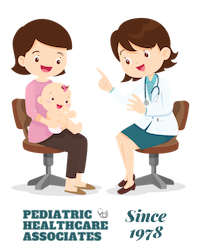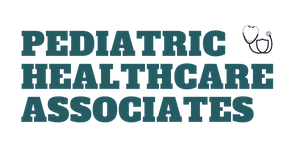All about Pediatrics in USA
All About Pediatrics in USA
Pediatrics is a specialized branch of medicine that focuses on the health and well-being of infants, children, adolescents, and young adults. In the United States, pediatric care is an essential part of the healthcare system, ensuring that children receive the medical attention they need at every stage of development. From routine wellness visits and immunizations to managing complex medical conditions, pediatric care is comprehensive and continually evolving.
One of the key trends in modern healthcare, including pediatrics, is the integration of digital tools. Platforms like the Patient Portal Altoona exemplify how technology is transforming the patient experience by offering convenience, transparency, and better communication between families and pediatric providers.
The Foundations of Pediatric Medicine in the USA
Pediatrics as a formal specialty began to take shape in the early 20th century. Before this, children were treated by general physicians without specific pediatric training. However, as medical science began to recognize the unique physiological and psychological needs of children, the demand for a dedicated branch of medicine became evident.
The establishment of the American Academy of Pediatrics (AAP) in 1930 marked a major milestone. Today, the AAP sets guidelines, conducts research, and advocates for child health across the nation.
Pediatricians in the U.S. undergo rigorous training that includes:
- 4 years of undergraduate education
- 4 years of medical school
- 3 years of pediatric residency
- Optional subspecialty training (fellowship)
This extensive education ensures that pediatricians are well-equipped to diagnose and treat a broad range of health conditions specific to children.
Structure of Pediatric Care in the United States
The pediatric healthcare system in the U.S. is robust and multifaceted, consisting of several components that work together to deliver high-quality care:
- Primary Pediatric Care
Primary care pediatricians are often the first point of contact for parents. They provide:
- Well-child checkups
- Immunizations
- Developmental assessments
- Nutritional guidance
- Treatment for common illnesses
Preventative care is at the heart of pediatric practice, with well-child visits scheduled frequently during the first few years of life and annually thereafter.
- Pediatric Subspecialties
Children with specific medical conditions are referred to pediatric subspecialists, such as:
- Pediatric cardiologists
- Pediatric neurologists
- Pediatric oncologists
- Pediatric gastroenterologists
These specialists work closely with primary pediatricians to ensure comprehensive care.
- Children’s Hospitals
The U.S. is home to some of the world’s best children’s hospitals, including:
- Boston Children’s Hospital
- Children’s Hospital of Philadelphia
- Cincinnati Children’s Hospital Medical Center
These institutions provide advanced care and are often affiliated with medical schools and research centers.
- Community Health Clinics
Federally qualified health centers (FQHCs) and state-supported clinics ensure access to pediatric services for low-income families. These centers often partner with digital platforms like Patient Portal Altoona to improve follow-up care and reduce missed appointments.
Preventative Pediatric Care
Preventative care is a cornerstone of American pediatrics. The Bright Futures program, developed by the AAP, outlines health supervision guidelines from infancy through adolescence. It includes:
- Vision and hearing screenings
- Behavioral and mental health assessments
- Immunizations
- Guidance on safety, nutrition, and physical activity
Vaccination schedules are strictly followed in the U.S. to protect children from diseases like measles, mumps, rubella, polio, and whooping cough. Pediatricians work closely with parents to ensure that vaccines are administered on time and that any concerns are addressed with evidence-based guidance.
Technology and Digital Innovation in Pediatric Care
The integration of technology into pediatric care has revolutionized the way healthcare is delivered and experienced. One shining example is the Patient Portal Altoona, which serves as a digital bridge between pediatricians and families.
Through the Patient Portal Altoona, parents can:
- Schedule appointments online
- Access their child’s medical records and immunization history
- Communicate with pediatricians through secure messaging
- Receive lab results and prescription updates
- Complete intake forms before arriving at the clinic
This digital tool not only improves efficiency but also empowers parents to take a more active role in their child’s healthcare journey.
Addressing Pediatric Mental Health
Mental health has emerged as a significant area of focus in pediatric medicine. Pediatricians are increasingly trained to screen for and manage conditions such as:
- Anxiety and depression
- ADHD
- Autism Spectrum Disorders
- Behavioral issues
- School-related stress
Incorporating mental health care into routine pediatric visits helps normalize these discussions and encourages early intervention. Digital platforms like the Patient Portal Altoona often feature educational resources and links to counseling services, making it easier for families to seek the help they need.
The Importance of Family-Centered Care
In the U.S., pediatric care is not just child-focused—it’s family-centered. Pediatricians work in partnership with parents and caregivers, offering education, emotional support, and shared decision-making. Families are encouraged to be active participants in their child’s health management.
Tools like the Patient Portal Altoona play a vital role in this dynamic. By giving parents round-the-clock access to health information and direct lines of communication with doctors, such portals strengthen trust and transparency in care.
Pediatric Care During the COVID-19 Pandemic
The COVID-19 pandemic posed unprecedented challenges to the healthcare system, especially pediatric services. During lockdowns and school closures, many children missed routine checkups and vaccinations.
However, the crisis also spurred innovation. Telehealth became a staple in pediatric care, and patient portals became essential tools. The Patient Portal Altoona allowed families to:
- Conduct video consultations with doctors
- Receive guidance on COVID symptoms
- Get vaccination updates
- Access mental health support
Post-pandemic, these tools continue to be integral to hybrid care models that combine in-person and virtual services.
Health Equity and Access to Pediatric Services
Despite the advanced pediatric infrastructure in the U.S., challenges persist, particularly in rural and underserved communities. Children from low-income families or minority backgrounds often face barriers to accessing timely and quality care.
Efforts to bridge this gap include:
- Mobile health clinics
- School-based health programs
- Telehealth services
- Bilingual and culturally sensitive care
Platforms like Patient Portal Altoona are also part of the solution, offering digital inclusivity and expanding access to healthcare resources for families across diverse backgrounds.
The Role of Pediatric Research and Innovation
The United States is a global leader in pediatric research. Breakthroughs in pediatric oncology, genetics, vaccine development, and neonatal care continue to emerge from U.S.-based institutions.
Children’s hospitals are often hubs for clinical trials and cutting-edge treatments. Advances in genomic medicine, for example, now allow for personalized therapies based on a child’s unique genetic profile.
Digital tools like the Patient Portal Altoona are expected to evolve further to integrate:
- Genetic data for personalized care plans
- AI-powered symptom checkers
- Wearable device syncing for health tracking
- Predictive analytics for early intervention
Training and Certification of Pediatricians
To maintain high standards, pediatricians in the U.S. must be board-certified by the American Board of Pediatrics (ABP). They must also engage in Continuing Medical Education (CME) to stay updated with the latest research, treatments, and technologies.
Pediatric nurses, physician assistants, and other allied health professionals undergo specialized training to support child-specific care in both clinical and community settings.
What Parents Should Know
Choosing the right pediatrician and staying engaged in your child’s healthcare journey can make all the difference. Parents should:
- Keep a vaccination schedule
- Attend regular wellness visits
- Ask questions during appointments
- Address behavioral or emotional concerns early
- Use tools like the Patient Portal Altoona to stay informed and connected
Education and proactive involvement are key to raising healthy, happy children in today’s fast-paced world.
Conclusion: The Future of Pediatrics in the USA
Pediatrics in the United States is a dynamic and evolving field that combines scientific rigor with compassionate care. As the nation adapts to new health challenges and technological advancements, pediatric care continues to prioritize the holistic well-being of every child.
Innovations like the Patient Portal Altoona represent the future of child healthcare—one that is more accessible, efficient, and family-centered than ever before. Whether it’s a routine vaccination or managing a chronic illness, digital platforms are reshaping the way parents and providers interact, making pediatric care smarter and more responsive.
As we look ahead, the focus remains clear: nurturing the next generation with empathy, excellence, and innovation.




